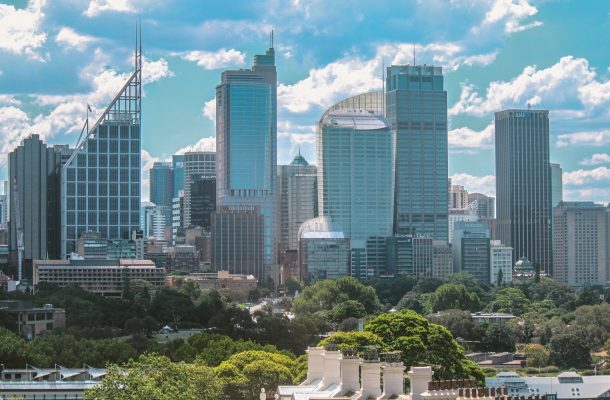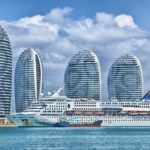Sydney tops Melbourne in global innovation survey

Sydney moved in the top 10 of the world’s most innovative cities for the first time since rankings started in 2007.
In tenth place, Sydney was also the first Australian city in the top ten and marked the first time three cities in the top ten had been in the Asia region. Melbourne moved up nine places to 16th, with a reinvigorated tech sector and government infrastructure projects supporting the Victorian innovation eco-system according to the analysts.
The overall winner was Tokyo, the first time an Asian city won the city rankings. The top five cities of the Innovation Cities Index included previous winners London (won 2015, 2017), Silicon Valley (San Francisco-San Jose) and New York, followed by Los Angeles. Singapore rose one place behind previous early double winner Boston, Toronto, Paris and Sydney rounding out the global top ten.
“What really surprised us this year, was the resurgence of Tokyo, moving up to eclipse rival cities like Boston. They showed clear direction by embracing smart technology change to lead innovation, and leadership in what we have identified as the twin long-term globe shaking trends of robotics and 3D manufacturing.” said Christopher Hire, director of commercial data provider 2thinknow, which publishes the annual ranking.
According to the analysts Tokyo’s gradual climb was also based off strong baseline performance average across the broad-base of 162 city indicators used to score the cities, and a focus on applied technology as a unique solution to current urban opportunities and challenges.
Behind the rankings is the analysis that cities with higher rates of innovation will experience higher economic output and be perceived as the best destinations to invest in commercial product, service or social innovation.
“This year innovation is likely to come from large cities as usual, but we found on a population-adjusted basis many small cities are punching above their weight. It’s the year of big cities with physical networks and small cities with digital networks, going global,” said Hire in a statement.
Innovation in ANZAC cities
In positive news for Adelaide (163), the city rose 14 places. Brisbane cemented the city’s leadership as the areas third major city, now in 54th place ahead of Auckland (96). Regional capitals of Newcastle (up 27 places) and Wollongong (up 38 places) also moved up based on recent community efforts to boost the cities and strengthened university performance (alongside Brisbane).
In Australia, more overlooked regional and smaller capital cities marched upwards such as Canberra (152), Adelaide (163), Gold Coast (198), Wollongong (262, up 38 places), Hobart (264, up 20 places) and Newcastle (up 27 places to 309) because of broadband access to global services.
Hobart’s startup and arts scene and resultant increased economic activity caused it to move up twenty places, with broadband mitigating some of the effects of the distance of the capital from global cities.
Australian cities improved on average eleven places relative to competing cities, which is the same as the overall improvement in Chinese cities. The analysts noted that improvement in the top hundred cities was harder than improvement outside the top hundred due to increased competition amongst changed trends in the top twenty percent globally.
New Zealand’s Wellington (96, up 8 places) moved up off strong environmental and cultural performances to challenge Auckland (down 7 places), partly attributed to rising business costs. Both Queenstown and Christchurch moved up and began recovering.
‘Nexus’ Cities
The Innovation Cities Index has been published annually since 2007 by commercial data provider 2thinknow to measure each cities pre-conditions for innovation using 162 indicators based on commercial data provided to corporations about the city.
The city ranking classified five hundred cities into four bands for innovation based on trend-adjusted scores derived from 162 indicators annually benchmarked and reduced to three factor scores for measuring conditions conducive to creating a process of innovation in a city.
The top band was ‘Nexus’ cities of which there were 52 cities (approximately top 10%). There were 120 cities in the next ‘Hub’ category (about 25%). 256 cities (or about 50% of cities considered) were in the next globally competitive ‘Node’ category, this year.
According to the research model ‘Nexus’ cities remain the optimal locations for innovation of a general nature, and Hub cities remain optimal for innovation in a few key industry segments.
After the classification process, the cities are ranked by the analysts. As in 2017, nine of the top Nexus cities remained in Asia, including Seoul (12), Hong Kong (27), Shanghai (35) now topping Beijing (37) and Osaka (45).
In North America, there were 23 Nexus cities compared with 19 last year, indicating renewed United States and Canadian cities dominance of innovation. Cities that improved dramatically in the ranking included Chicago (11), Dallas-Fort Worth (13), Seattle (15), Houston (17), Austin (29), Denver (31) and Philadelphia (32) due to favorable trends and improved economic development.
The last time the Index was compiled in 2016-2017 was based on Obama era data, and while overall scores had declined just over one percentage point, United States cities showed higher scores on average across all cities.
In Europe there were 19 Nexus cities, reversed from 24 cities last year due to declined economic conditions providing a slower market rate of adoption of innovations according to the analysts. There were fewer rising cities in Europe, but some included Berlin (13), Oslo (36) and Rome (47).
Last year’s high-ranked European capitals that fell but retained high positions Amsterdam (18), Vienna (19), Munich (21), Barcelona (30), Madrid (38), Copenhagen (39) and Milan (40). According to the analysts, this was due to less favorable trends and distractions from a local policy focus on economic development and innovation during the period.
Dubai (33) remained the only Emerging Nexus city, although Tel Aviv remain highly ranked (44) competitor in the Mid-East region, with the next regional city being Abu Dhabi (69), trailed by Kuwait City (268) and Doha (294).
Africa’s top innovator remained Cape Town (265) and Johannesburg (380) although both cities declined due to the economic implications of recent policies.
Innovation in Asia
The total number of top hundred cities in Asia fell by one to 18 from 19, due to Perth (now 105) and Guangzhou (113) being jumped by newcomer Wellington.
Overall top hundred cities in Asia region improved by an average of three places, and five places in the top 35% of all cities. Analysts attributed to a ‘spike’ factor of wealth concentration in Asian society, reflecting a greater concentration of innovation to fewer locations in Asia, compared with the greater distribution more equitably within European society. In practice, this means location matters more in starting new ideas in Asia than Europe or the United States.
Beyond Nexus cities, other key Hub cities in Asia region included Brisbane, Shenzhen (55), Taipei (60), Kyoto (64), Busan (68) and Kuala Lumpur (99).
Major Chinese cities held steady in the Index overall with the most notable rises being in the two Nexus cities of Hong Kong (up 8 places) and Shenzhen (up 14 places). Other notable changes included Suzhou (up 42 places) and cities such as Fuzhou, Ningbo and the island of Macau improving significantly.
The top Indian cities for innovation were Mumbai (92) and Bangalore (139), with Delhi at (199).
The Americas
In the United States, Los Angeles and a series of Bay Area satellite cities such as San Diego (23), Portland (41), Oakland (up 12 places to 43), Sacramento (up 21 places to 59) and Santa-Ana-Anaheim (up 37 places) reinforced their destination attractiveness to tech companies priced out of the San Francisco Bay Area in the analysis.
Oakland was noted as especially significant, having capitalized on the success of being in the Bay Area while having a distinct city program and overcome past economic issues.
North American cities were represented in the top hundred cities with 37 cities in the United States, 5 in Canada and Mexico City (73) being the new winner in Latin America, replacing Sao Paulo and Rio De Janeiro. This left 43 cities within the top 100 in the NAFTA Zone.
Larger Canadian cities continued their top rankings with few changes including Montréal (22), Vancouver (25) and Québec City (58) due to higher costs.
Lower business costs and improved innovation policies lead Ottawa (126), Halifax (202) and Hamilton (205) to achieve above average positions relative to their smaller populations with potential to improve in future years.
Outside the top hundred innovation efforts by cities like Detroit’s (80) neighboring small city Ann Arbor (up 51 places to 114) and Des Moines in Iowa (up 26 places) could be seen in their movements. The analysts noted the start-up and tech scenes appearing in American cities as providing “strong grass roots of opportunity positivity in the U.S. economy”.
A lot of this was noted as due to the movement of new product ideas “as a service” e.g. SAAS (Software as A Service), FAAS (Fashion as A Service) or MAAS (Mobility as A Service) enabling new ways of monetizing undervalued assets in the digital economy.
The top 10 Latin American cities moved up an average of 11 places each, showing that Latin American capitals were challenging and growing distinct identities from cities of the United States. The fastest movers were Bogota (up 46 places) and Santiago (up 23 places) off improved start-up and more stable business policies.
Europe
Because the Index factored in economic performance, Europe scored fewer cities than usual with 35 in the top hundred but with improved performance by Stockholm (28), Oslo (36), recovering Athens (62) and Lisbon (rising 17 places to 90).
Strong mobility solutions (such as an embedded fast rail network) were noted as a key performance differentiator enabling European cities to maintain a strong performance.








